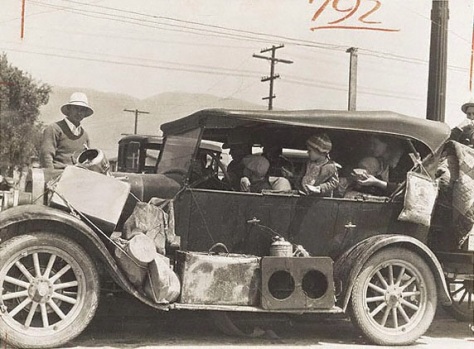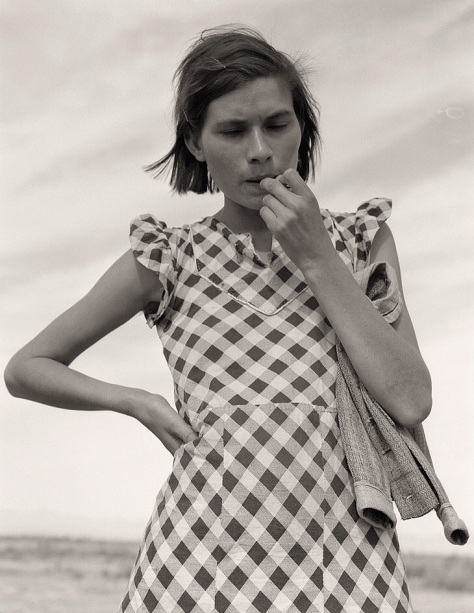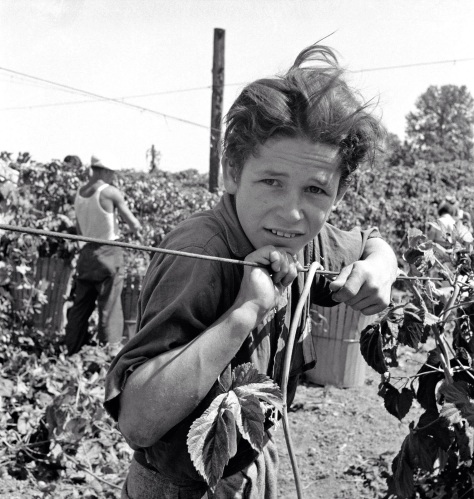Dorothea Lange’s photographs captured a part of American history that much of the country had not witnessed: the Dust Bowl and the resultant migration of thousands of American farmers. The Dust Bowl was caused by drought combined with unanchored soil which had been left by farming methods of the time. The soil turned to dust, which blew in huge clouds across the sky. As a result, tens of thousands of families could no longer make a living as farmers and left their homes. Taking all their worldly possessions in jalopies, they searched for farming opportunities elsewhere, mostly in California. This phenomenon overlapped with the Great Depression, causing hopeful migrant workers to find similar economic conditions to the ones they had left back home.
That’s when Dorothea Lange came on the scene. She worked with a government agency to document the living conditions of these families. I was struck by her bravery in life and in her approach to photography. Dorothea managed to freeze a painful moment in time in such a real, candid way. Her photos left me with so many questions. Where did this family come from? Where would they end up? How will their story end? And in so many shots, it seems that the subjects were just waiting. Waiting to find work. Waiting to get their car repaired. Waiting for life to get better. Dorothea vividly expressed the plight of the mother and her efforts to care for her children in deplorable conditions. Meanwhile, Dorothea had left her own children behind in the care of foster homes, coming and going according to her work assignments.
Dorothea had begun her photography career making portraits of wealthy families in San Francisco. When the Great Depression reached her neighborhood in the form of bread lines and social demonstrations, she became a social commentary photographer. Dorothea related this moment, “So I said, “I will set myself a big problem. I will go there, I will photograph this thing, I will come back, and develop it. I will print it, and I will mount it and I will put it on the wall, all in twenty-four hours. I will do this, to see if I can just grab a hunk of lightening that is going on and finish it.” I couldn’t run two things together consecutively, and two sides of my life. I couldn’t, but I could take this piece and isolate it, which I did.”
Of her subjects, she said, “People are very, very trusting; and also, most of us really like to get the full attention of the person who’s photographing you. It’s rare, you don’t get it very often. Who pays attention to you, really, a hundred percent? You doctor, your dentist, and your photographer. They really look at you, and it’s nice, you know.”
If you’re interested in learning more about Dorothea Lange, here’s the link to the PBS American Masters feature of her. If you watch it, I’d love to hear your thoughts. We’ll go out for ice cream…my treat.


















